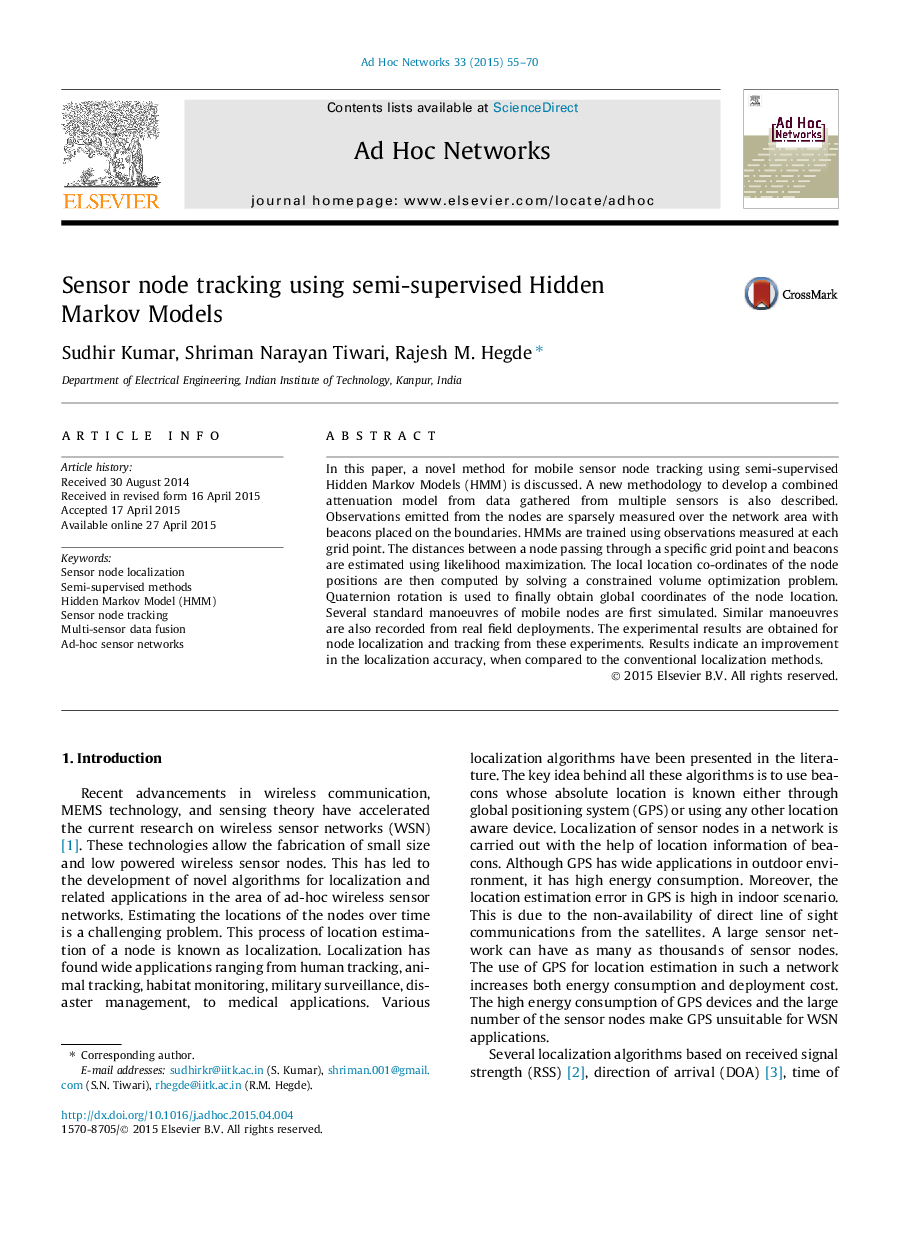| Article ID | Journal | Published Year | Pages | File Type |
|---|---|---|---|---|
| 444298 | Ad Hoc Networks | 2015 | 16 Pages |
In this paper, a novel method for mobile sensor node tracking using semi-supervised Hidden Markov Models (HMM) is discussed. A new methodology to develop a combined attenuation model from data gathered from multiple sensors is also described. Observations emitted from the nodes are sparsely measured over the network area with beacons placed on the boundaries. HMMs are trained using observations measured at each grid point. The distances between a node passing through a specific grid point and beacons are estimated using likelihood maximization. The local location co-ordinates of the node positions are then computed by solving a constrained volume optimization problem. Quaternion rotation is used to finally obtain global coordinates of the node location. Several standard manoeuvres of mobile nodes are first simulated. Similar manoeuvres are also recorded from real field deployments. The experimental results are obtained for node localization and tracking from these experiments. Results indicate an improvement in the localization accuracy, when compared to the conventional localization methods.
